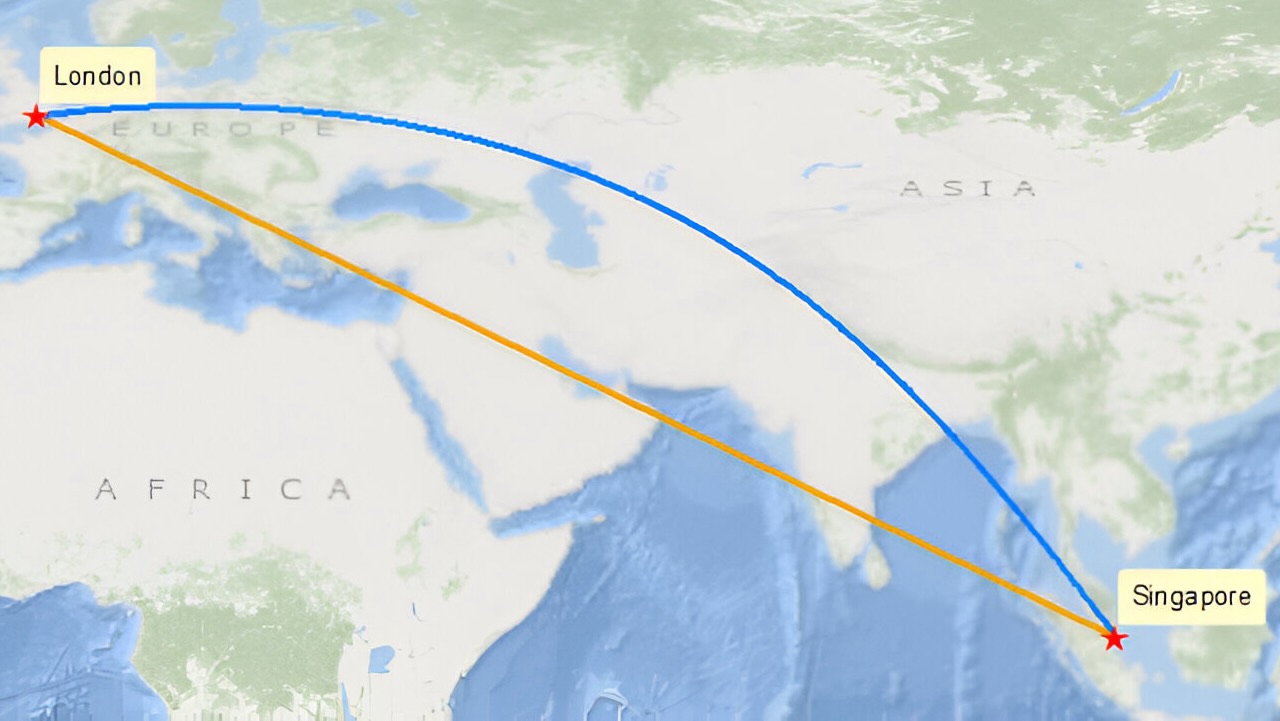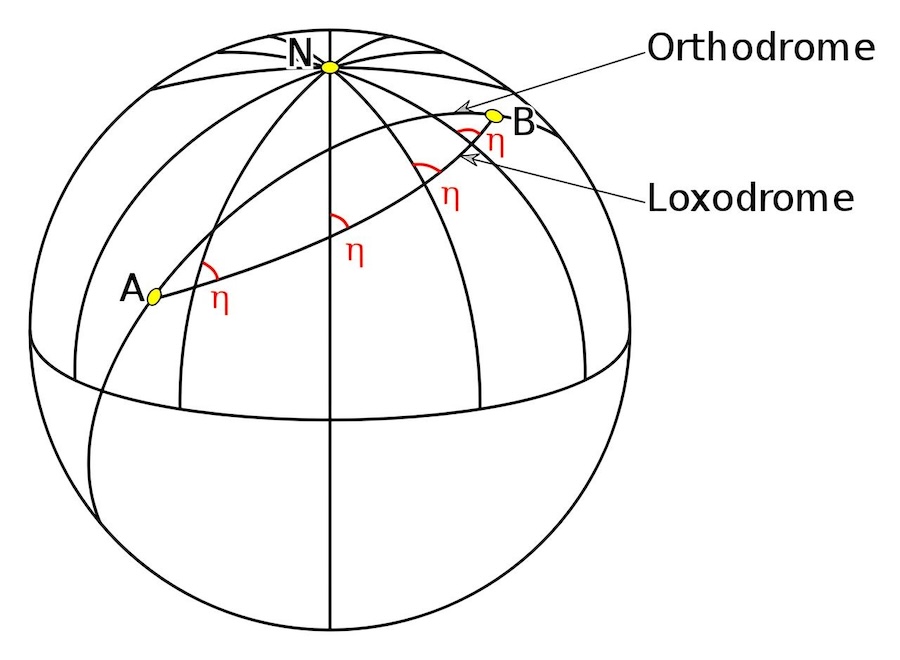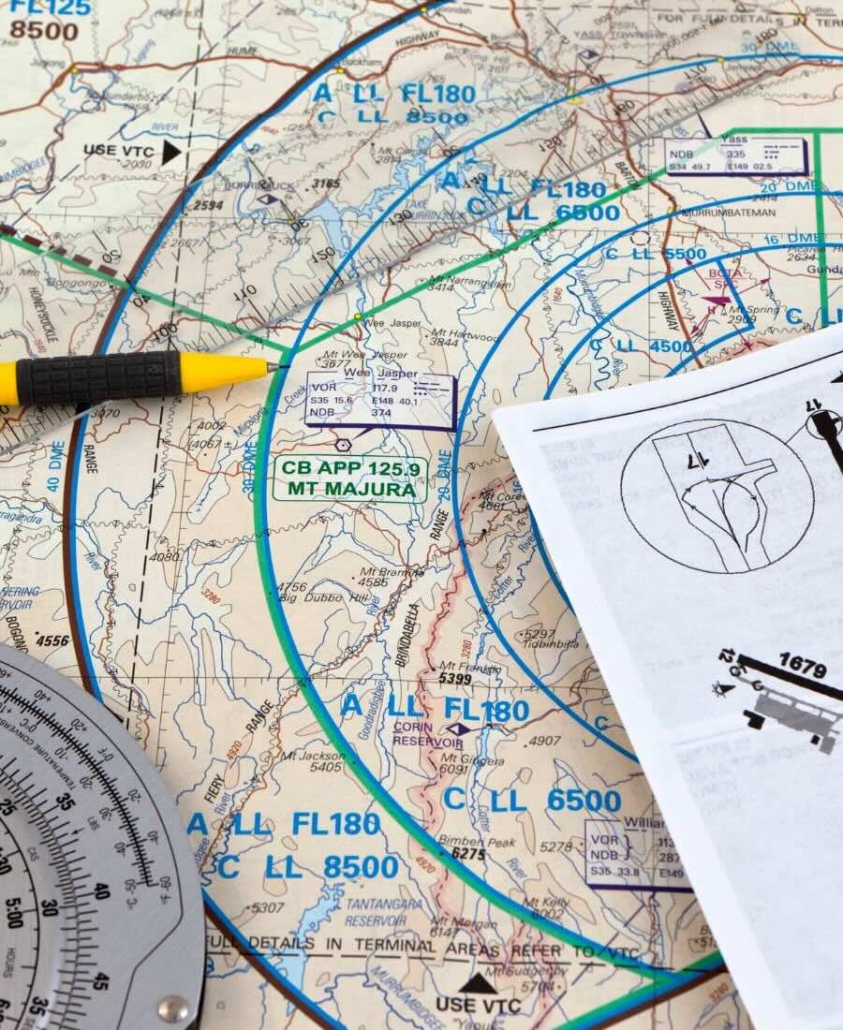The main difference between rhumb line and great circle navigation lies in efficiency and course. While the great circle route offers the shortest and most direct path between two points, taking advantage of the Earth’s sphericity, the rhumb line adheres to a constant course, simplifying navigation but extending the total distance of the journey.
In the vast sky that connects continents, this difference is crucial for flight planning, where efficiency and resource savings are paramount.
Why is the Great Circle Route chosen sometimes and the Rhumb Line others?
And you may wonder, why is one route chosen over another at times? Well, the reason lies in how the plane intersects each meridian. In the great circle route approach, the flight path involves cutting each meridian at a unique angle, requiring constant course adjustments, as navigation routes are designed for straight segments rather than curves.
On the other hand, in the rhumb line approach, the plane flies straight on the sphere without constantly changing its course during displacement.
The great circle route offers advantages in terms of time and fuel savings, although it requires continuous course adjustments. On the other hand, the rhumb line, being easier to follow as it does not require course changes, is commonly used on short flights. However, on long flights, where the priority is to minimize fuel consumption, the great circle route is usually preferred.






